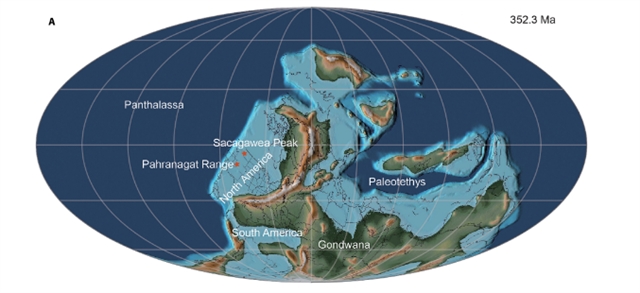
南京大学沈树忠团队揭示了海洋生物泵的增强是晚古生代冰河期开始的触发因素。2025年7月4日出版的《科学-进展》杂志发表了这项成果。
中新世中期碳同位素偏移(TICE)是晚古生代最大的正碳同位素偏移,与晚古生代冰期(LPIA)的开始时间一致。
为了研究海洋生物泵在TICE期间的变化,研究组测量了美国鹿角前陆盆地两个海相灰岩剖面的钡同位素(δ138Ba)。结果表明,鹿角前陆盆地的正δ138Ba变化是地质历史上最大的,表明该盆地的海洋输出生产力增加,随后是生产力驱动的缺氧扩张。
这两个测点的δ138Ba绝对值不同,表明了早密西西比世海洋生物泵强度的空间差异。地球系统模式模拟表明,全球海洋出口生产力需要增加30%才能解释观测到的变化。他们的发现支持了这样一种观点,即海洋生物泵的增强促进了有机碳埋藏的增加,以及从温室气候到低碳气候的过渡。
附:英文原文
Title: Enhanced marine biological pump as a trigger for the onset of the late Paleozoic ice age
Author: Feifei Zhang, Alexandre Pohl, Maya Elrick, Guang-Yi Wei, Keyi Cheng, Peter Crockford, Mojtaba Fakhraee, Yi-Bo Lin, Na Li, Xiang-dong Wang, Shu-zhong Shen
Issue&Volume: 2025-07-04
Abstract: The mid-Tournaisian carbon isotope excursion (TICE) represents the largest positive carbon isotope excursion in the late Paleozoic, coinciding with the onset of the late Paleozoic ice age (LPIA). Here, to investigate changes in the marine biological pump during the TICE, we measured barium isotopes (δ138Ba) in two marine limestone sections in the Antler foreland basin (USA). We found the largest positive δ138Ba shifts recorded in geological history, indicating increased marine export productivity in the Antler foreland basin, followed by the productivity-driven expansion of anoxia. The nearly identical stratigraphic trends, along with different absolute values in δ138Ba between the two sites, suggest spatial differences in marine biological pump intensity during the Early Mississippian. Earth system model simulations indicate that a global increase of 30% in marine export productivity is needed to explain observed changes. Our findings support the idea that an enhanced marine biological pump contributed to elevated organic carbon burial and the transition from a greenhouse climate to the LPIA.
DOI: adv2756
Source: https://www.science.org/doi/10.1126/sciadv.adv2756
